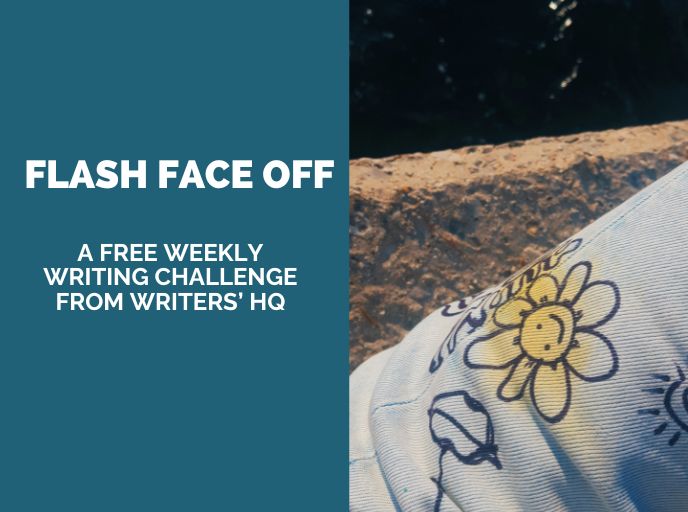
Fellow writing weirdos – it’s our time. Look at Strange Weather, winner of the 2020 Manchester Fiction Prize. Look at Frankenstein’s Monster is Drunk and the Sheep Have All Jumped the Fences, winner of the 2020 Moth Short Story Prize. We’re writing in a time where there’s increasingly more acceptance of stranger stories in literary fiction.
So how can you write pieces that are weird enough to stand out, but still stand a chance of success? Well, I start with Lady Gaga. Remember when she wore that raw meat dress to the MTV Awards? If you want to write a story as strange as that dress then go for it, but in order to get published or placed in a competition you need to pull it back in a bit. Have a look instead at Lady Gaga on the red carpet at the 2015 Oscars.

Classic make up, a stunning white dress, and a pair of oversized, bright red, washing up gloves. Think of Lady Gaga’s base outfit here as the base of your story – classic, well put together, striking, everything you’re looking for but then BAM! BRIGHT RED WASHING UP GLOVES! She knew exactly what she was doing, those gloves were all over the papers the next day, because they were unique and memorable.
So how can we apply this to our writing? Here are a few short exercises to trigger some ideas a little different from the norm.
1 – Read Space Hopped by Lis Ingram Wallace
Lis is the queen of unique flash fiction and this is one of my favourites, it’s disjointed for sure, but there’s a definite narrative to the piece.
TASK: choose a childhood game, and a big news story. Alternate a line from the action of the game, with a line about the news story. Do your choices complement each other? Or provide a stark contrast? Weaving something nostalgic with something current is one way of making your work distinctive. (If you extend this task to a story, be sure to fictionalise the news section, to avoid any legal issues, but also make it even more unique to you.)
2 – Read Fly Away Home by Helen Rye
A ladybird and outer space! I love the size contrast in this story, and also the contrast of the scientific language versus nature.
TASK: choose something really small and something really big. How would these two things ever end up together? In what circumstances might you find them? How would one affect the other in a narrative?
3 – Read Things Left and Found By the Side of the Road by Jo Gatford
I love list stories and I think this one is so effective. The tragic narrative is cleverly woven in among familiar, everyday descriptions and the last line is a belter.
TASK: Write down three things you can see from your window, using sensory description and overly poetic language. Then write down one thing about an important person / time / memory using sparse, detached language. Repeat until you’ve filled a page. Often, your subconscious will start to link things together and create a narrative for you.
Finally, here’s my own reliable little trick to creating stories with a layer of strangeness. Make a chart, like so:
| MINOR, EVERYDAY EVENT | MAJOR, LIFE-CHANGING EVENT | WILDCARD |
| Doing the laundry | Death | Otters |
| … | … | … |
Then fill in, as many ideas as you can. If you get stuck for a wildcard, head to the internet and literally google ‘strange animals’ ‘strange events’ and so on. The row I’ve filled in above led directly to my story, The Pelt Collector.
Once you have your chart, make notes, sketch out ideas, see what jumps out at you. You could have your characters be experts on the wildcard, a leaflet could be posted through the door about it, they could simply be watching it on TV – whatever it takes to trigger a little strangeness in your story.
Here’s an example of how I might start to flesh three such prompt words into a story.
Let’s take watching TV, grieving, an assassin bug.
The assassin bug is a creepy creature that carries the corpses of things it has killed on its back. So, maybe my protagonist sees an assassin bug on a nature programme, and starts to reflect on how they are carrying their own grief. They could literally start wearing the clothes of the recently deceased person, layering them up, as a way to stay close to them, in emulation of the assassin bug. They could find an assassin bug and try and ‘save’ all the poor creatures stuck on its back because they couldn’t save the person they are mourning.
These are just the first few ideas that came to me, with practice you’ll be able to think of more and more each time you try.
Stay weird! And if you’re in need of more guidance on turning your weird and wonderful ideas into stories, take a peek at the Writers’ HQ Guide to Flash Fiction.








